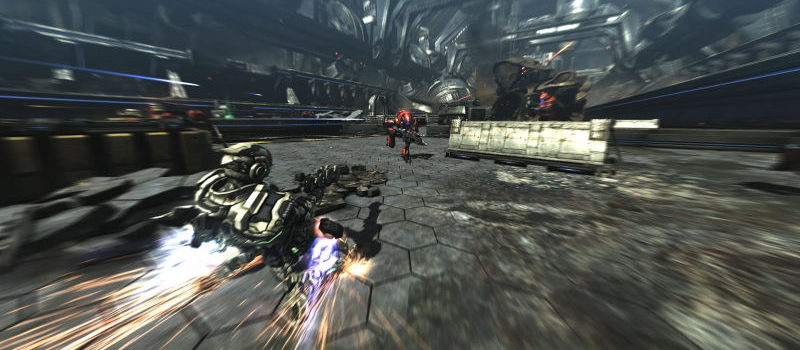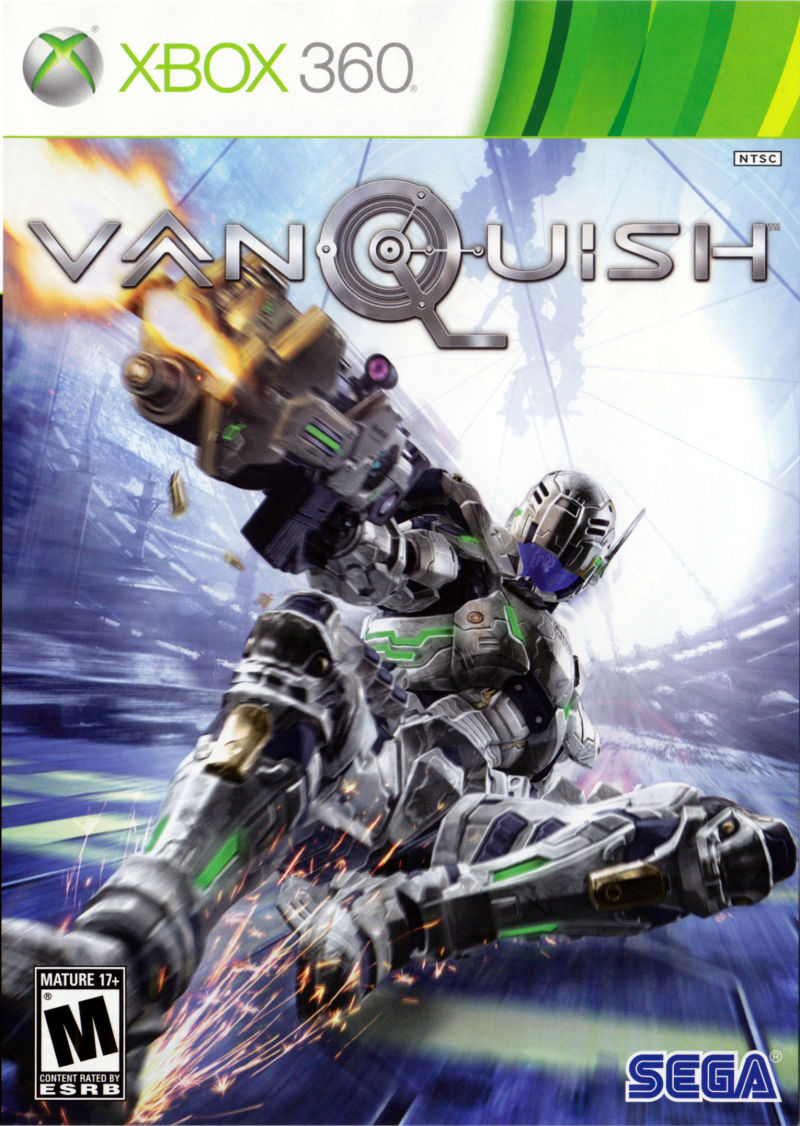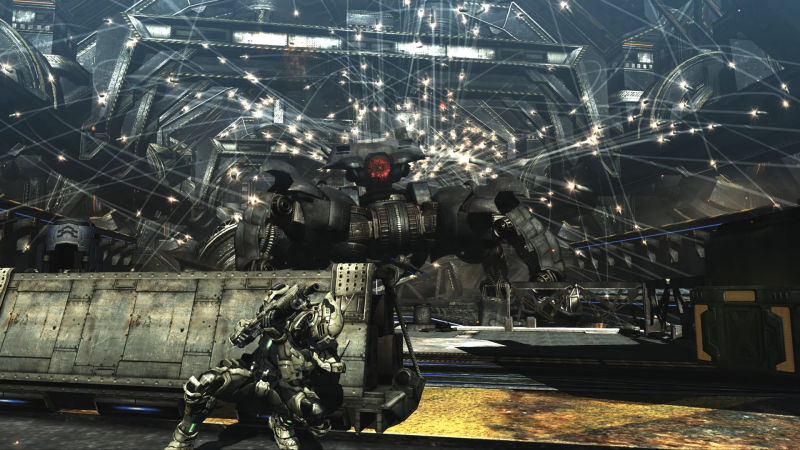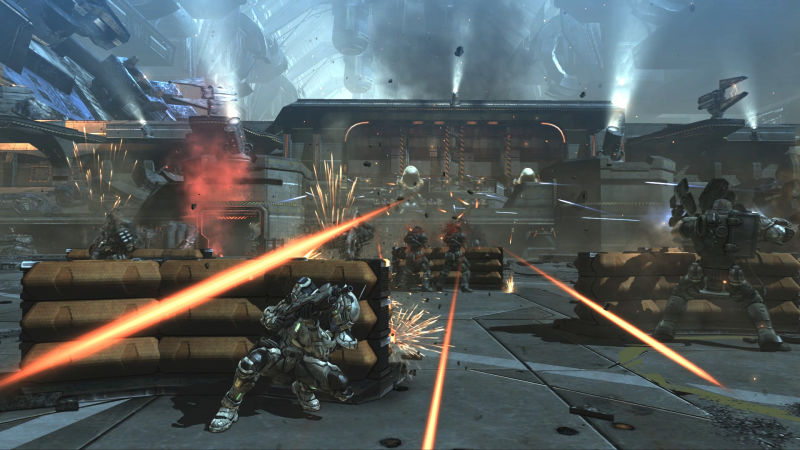

“We will not negotiate with those who wish to destroy us.”
Combining the chaos of old school 2D bullet hell shooters with the cover-based mechanics of Gears of War into a frenetic blitz of mechanized artillery, PlatinumGames’ Vanquish offers a limited but exquisitely fine-tuned third-person action experience. Directed by Resident Evil creator Shinji Mikami, it somehow managed to fly under the radar until it was re-released alongside Bayonetta in 2020. I was one of the cool kids who played it way back when.
The game is entirely defined by its fluid combat, offering players two special abilities: to slow down time, and to glide around like Pete Townsend with a jetpack strapped to his back. These nifty mechanics encourage the sparing use of cover in favor of confronting enemies head-on in slo-mo, leading to a mesmerizing blur of gunplay, acrobatics, and richly imagined robotic fiends. Like the best shooters, it makes movement—rather than aiming crosshairs—the primary source of player engagement.
During an early boss battle, swarms of heat-seeking missiles issue out of the towering, spider-like mechanical terror, as the surfeit of turrets that line its flanks fire ceaselessly. Sentient, mobile walls are introduced, which lay down fire with retractable lasers and provide moving cover for their comrades. Later, the player will seek transport on a dual rail system and find himself swirling in a double helix of questionable gravity, targeting enemies inverted above and then below him. There’s a limited number of enemy types but an abundance of them on screen at pretty much all times as the player regularly finds the resolution of one firefight to be the prelude to another.

Indeed, Vanquish challenges the convention of scripted combat sequences, allowing the player great tactical freedom. Glide behind enemy lines and commandeer their turret, boost up and unload a shotgun into an enemy’s weak spot and boost away, weave lemniscates around a spider-boss’s legs, lob a grenade and then shoot it out of the air in slow motion. When Vanquish is at its best, so much is happening on screen and on the controller that it almost requires a spectator’s commentary or a screen capture to fully process what you’re doing in the moment. It’s a true gamer’s game that you get better at as you continue playing, where the thrill of the breathless stringing together of button combinations overcomes all of the game’s regurgitated generics.
Although players can force Vanquish to play like a run-of-the-mill cover-based shooter, crafty gamers will take advantage of what the game offers and develop their own instinctive pattern of combat—combining dodges, boosts, gunplay, and melee into an ever evolving strategy full of split-second decisions. As in Mikami’s previous game, God Hand, mastery of the idiosyncratic fighting style in Vanquish is all but required on higher difficulties. Conventional tactics (run-and-gun, cover-jumping) simply don’t serve. For better or worse, becoming proficient in this aggressive, out-in-the-open dodge/boost strategy takes time and effort, trial and error. Health depletes quickly, and players must be comfortable operating in close proximity to enemies even after taking a few hits. But once players adjust to this new world, all of the game’s subtle design choices clarify, such as its color-coded weapons, upgrade system, and automatic deployment of near-death slo-mo.

There’s a story, of course, but it’s entirely forgettable (indeed, by the time I sat down to collect my thoughts I found that most of it had disappeared from my brain). Something about satellite colonies, a coup in Russia by an army of robots, giant laser beams cutting a hole through San Francisco, space marines, kidnapped scientists, classified orders, high treason, yada yada… it’s totally absurd, a nice campy cartoon romp that you’ll pay some attention to on your first go around and then entirely tune out on subsequent playthroughs. Platinum should have gone the Doom route, for sure, even if we are to entertain the idea that the hyper-macho gobbledygook is meant as Bulletstorm-esque industry satire.
But am I playing the game for its story? Not at all. Who cares what story trappings are draped around a game like this? Its narrative particulars might be daft, but its themes and aesthetic serve just fine as the backdrop to get player-character Sam Gideon onto the battlefield with his Augmented Reaction Suit, which is in and of itself a graphical curio, constantly in subtle motion—shifting its electromechanical apparatuses around to “create” the weapons that Sam encounters in his environment, recharging its boosters, uncovering his face for smoke breaks.
In a market that favors sprawling open worlds and lengthy playtimes, Vanquish offers a single-minded arcade experience—short, tight, and rhythmic.